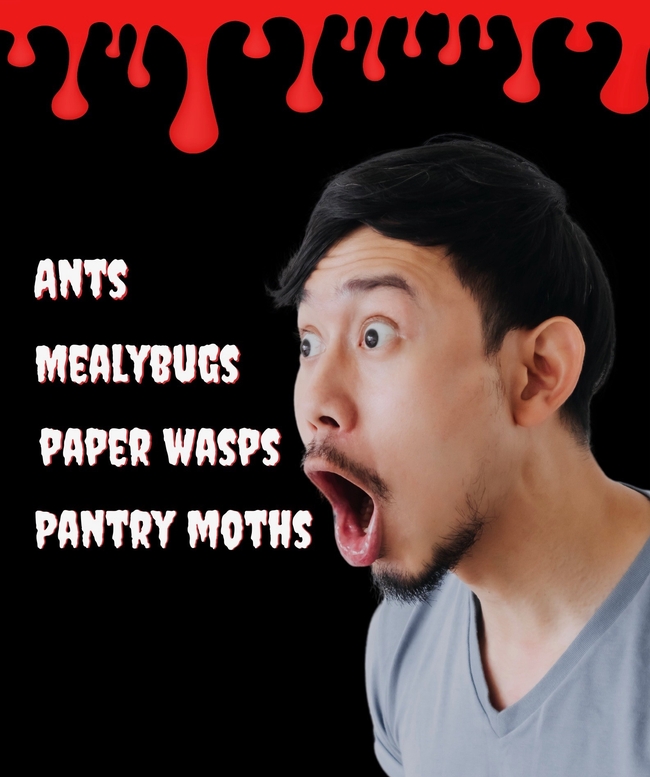The past few weeks have been “fun” with pest challenges in our garden and home. In the kitchen we battled ant infestations and pantry moths. In the yard the milkweed plants have been covered with oleander aphids, the California lilac (Ceanothus) was attacked by mealybugs accompanied by ants, and paper wasps (Polistes) have been trying to build a nest on the front porch.
How to tackle each of these issues? UC IPM (University of California Integrated Pest Management) Pest Notes and Quick Tips is my go-to for all these issues.
Inside the House:
Pantry Moths
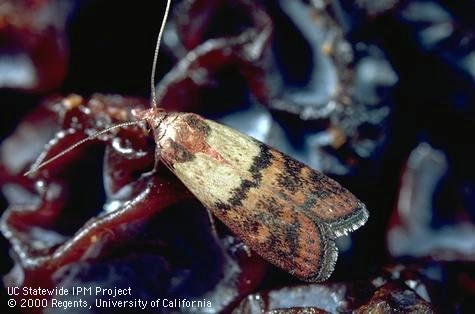
Ants
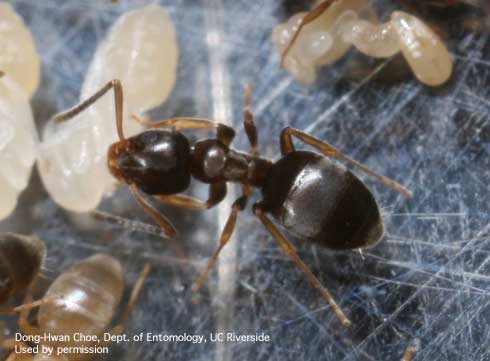
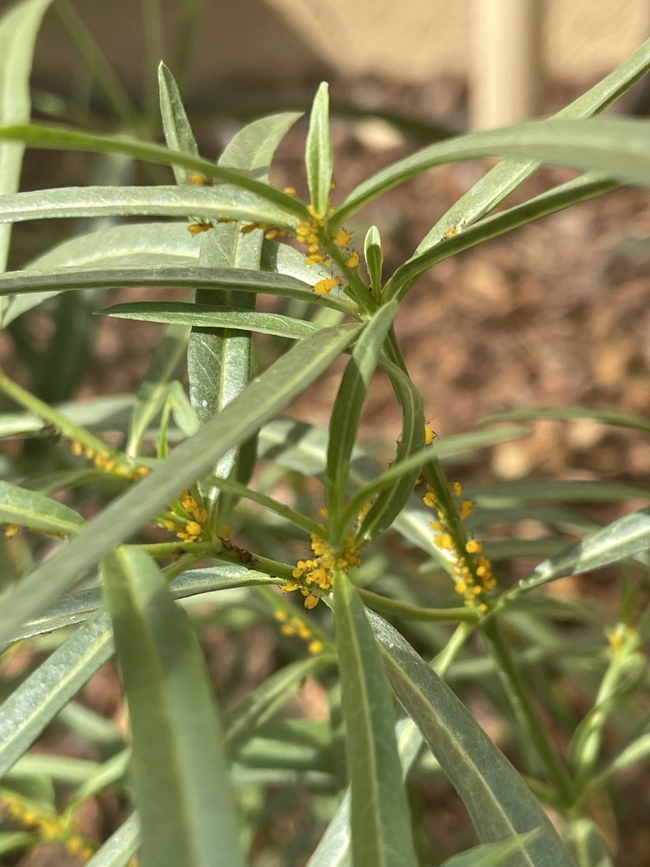
In the garden:
Milkweed and oleander aphids (Aphis nerii)
I hoped I had escaped getting the detested orange oleander aphids this year, since in recent years they usually showed up earlier in the summer, but ultimately, they appeared. Most established plants can tolerate some aphids, but all aphids produce honeydew, which can attract ants and sooty mold. Since milkweed is the sole food source for the Monarch butterfly caterpillar, pesticides are not recommended. Thus, using strong sprays of water every couple of days helps manage them. Based on previous experience, I know they will reach the end of their life and ultimately disappear. https://ipm.ucanr.edu/QT/aphidscard.html
Mealybugs (Pseudococcidae)
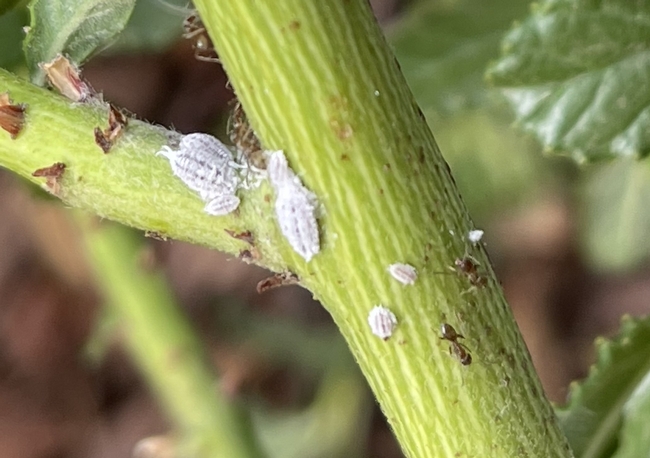
Paper wasps (Polistes gallicus)
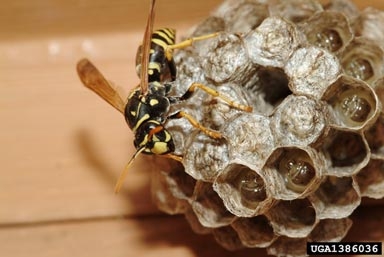
Thanks to UC IPM, which provides information on garden issues and pests, along with giving scientifically researched options on how to deal with them, I have managed to either control or eliminate these pesky pests.
UC IPM Resources:
The above links are to Quick Tips, short, to-the-point cards on each topic. They are available for free at local UC Cooperative Extension offices. The references below are for Pest Notes, which may have multiple pages and offer more detailed information about each topic.
Ants: https://ipm.ucanr.edu/PMG/PESTNOTES/pn7411.html
Pantry Pests: https://ipm.ucanr.edu/PMG/PESTNOTES/pn7452.html
Aphids: https://ipm.ucanr.edu/PMG/PESTNOTES/pn7404.html; https://ipm.ucanr.edu/PMG/PESTNOTES/pn7410.html
Mealybugs: https://ipm.ucanr.edu/PMG/PESTNOTES/pn74174.html
Wasps: https://ipm.ucanr.edu/PMG/PESTNOTES/pn7450.html
Denise Godbout-Avant has been a UC Cooperative Extension Master Gardener with Stanislaus County since 2020.

- Author: Anne E Schellman
If you've been startled by insects crawling in a food package or moths flying around your kitchen, you might have a pantry pest infestation. These insects are brought into your home inside food packages such as nuts, grains, cereal products, and even chocolate!
Meal Moths
This distinctive looking moth flutters around your kitchen, distracting you from the real culprit, their larvae. These caterpillar-like insects do all the real damage when they feed inside packages of cereal, flour, rice, dried fruit, candy, and nuts. You might also see tiny webs inside packages, this is the silken cocoon of the insect before it changes into a moth. Killing off the moths won't solve your problem.
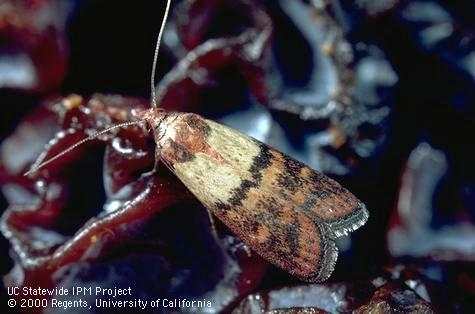
Beetles
There are several beetles that infest food, including warehouse beetles, grain beetles, cigarette beetles, and flour beetles. They feed on a variety of products including bird seed, pet food, tobacco products, animal hair (like wool), dried herbs and spices, dried meat and fruit, and even rodent bait.
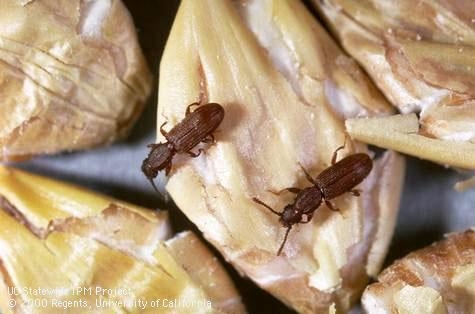
What Should You Do?
Although it might feel satisfying, spraying a pesticide is not an effective way to get rid of these pests. First, find the source of the problem. Look through all grain products and packages in your kitchen, especially opened packages. When you find the pests, seal the packages and throw them away. Remove everything from your shelves and wipe with soapy water to kill pests. Vacuum any crevices where pests or pest eggs may be hiding.
Fun Video
Watch this short video below from UC IPM for more detailed information on dealing with pantry pests. You can also read in more detail in the UC IPM Pest Notes: Pantry Pests.

